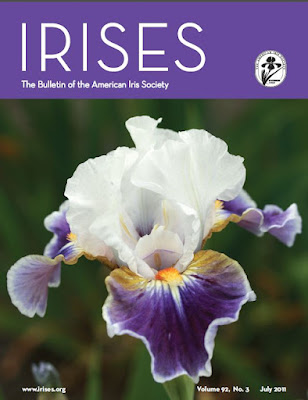I rarely am nostalgic for times past and don't long for the return to rural America of the 19th Century, no matter how beautiful and pastoral it may have been. I do like my indoor plumbing, drinkable water from the tap, and central heating. However, as a member of the AIS for over 50 years (I did start, I must point out, as a young teenager and Phil Edinger has the record in Region 14 for AIS membership with 60 years), there are times when I look back at the garden scene years ago and firmly believe it was better than today.
 |
| Melodrama (Cook) Williamson image |
At that time, the importance of Clara Rees' Snow Flurry as a parent was well known; Bernice Roe was working quietly in her pursuit of green color, though her first introduction Sunset Blues would come from crossing two obvious irises—Whole Cloth and Melodrama; Mary Ellen Knopf had died and Maynard had taken over the breeding lines. Oddly enough, I have much clearer memories of the Rees and Roe garden than the much closer Knopf garden and shortly thereafter Maynard retired and moved to Potter Valley. The Knopfs, too, had been interested in the color green (more on that in another blog)--they did a couple of things that were unique. Seedlings were grown under a double numbering system—one number until they were selected and then a new number after selections. It creates havoc trying to figure out if named varieties are actually sister seedlings since selections form the same cross could have wildly varying numbers.
 |
| Launching Pad (Knopf) Williamson image |
 |
| Craftsman (Knopf) Williamson image |
But more of these ramblings in the next post about iris California hybridizers going green.
My sincere thanks to Janet Smith for converting my slides into digital images.
My sincere thanks to Janet Smith for converting my slides into digital images.















































